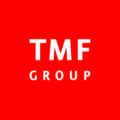
Google “business globalization” and a vast assortment of posts appear with much of the same information.
Globalization is very much about the efficiencies and opportunities open markets create. And while we’re not diminishing the necessity of hard work, research, and time; efficient and timely foreign market entry is the key to success for many businesses around the world.
A 2014 McKinsey study estimates that 1.8 billion people will enter the consuming class by 2025, annually spending $30 trillion – or 50 percent of the world’s consumption. Thanks to ever-increasing technological advancements, new markets will have better access to businesses that sell products all over the world.
Businesses just like yours.
With the help from international compliance experts from TMF Group, we identified four systematic approaches towards globalization – including their benefits, implications, and possible risks.
Ecommerce
One of the easiest ways to bring your product to foreign markets is via ecommerce – sell on your current website and ship to your customer’s location. This is by far the fastest way to start selling internationally. But it’s also extremely costly since every package has to be cleared by customs.
Depending on your needs and capabilities, there are ample other ecommerce options.
To make the clearing process more efficient and flexible for companies outside the EU, which sell to private individuals in the EU, businesses can simply register for VAT in the European country of importation. For example, if goods enter the EU through the Netherlands, a Dutch VAT and registration in the Netherlands are sufficient.
If you have a bit more money and time, a global ecommerce solution – such as shipping items by region and payment methods – provides much more flexibility along with a well-structured process for selling to new markets. Due to the necessary matrix needed to manage rules and regulations for different locales, this can be a relatively expensive option. However, once annual revenue is established, this becomes a more cost-effective option.
Keep in mind: Easy doesn’t always mean risk-free. Expanding to new markets means needing to know the customs, as well as duty and shipping restrictions.
You also need to comply with rules of international marketplaces before you can start selling, as some countries require you register your company there. But thanks to EU VAT laws, one registration is adequate to begin shipping internationally as the VAT is levied by the country where the package is delivered.
Employment without establishment
When a foreign company sends an employee to work abroad it has two possibilities: a posted employee or employment without establishment (EwE).
EwE allows foreign companies to employ people without establishing a legal entity. According to Igor Dakic, Commercial Director SEE at TMF Group, employment without establishment “is an elegant and comparatively cheaper solution for employing staff.”
Because there’s no need to open a branch or keep accounting records, companies eliminate the costs associated with legal fees and bookkeeping.
But there is a whole host of unique advantages:
- Easy registration with payroll related authorities – mainly with social security, income tax office, and the like
- Businesses are able to register employees with the all social protection agencies
- If you deem the market not a good fit for your brand, it’s easy and straightforward to close
Keep in mind: Before doing anything else, it’s imperative that all companies entertaining the idea of employment without establishment consult with proper legal and tax advice.
They must also understand the underlying principle of auxiliary activity: if employees engage solely in promotional and information-gathering, then they can operate without establishment. However, if employees in any way handle manufacturing or sales, then the auxiliary benefits are forfeited and the company is forced to establish a legal entity.
Ready-made companies
Entering a foreign market can be a lengthy and pricey event. One way for companies to set up fast and compliant is through the purchase of shelf-companies.
Paper, shelf, or aged companies have fulfilled all requirements for legal registration and may be bought by anyone to bypass the lengthy registration or incorporation process.
Created and left with no activity – metaphorically put on the “shelf” to “age” – these ready-made companies can be set up in as little as a few days, allowing you an almost immediate entry to the market.
By purchasing already established companies, you are also purchasing a credible history reputation in the market. Other benefits include:
- Some countries require a company be in business for a certain length of time before partaking of certain opportunities
- Show corporate longevity in order to attract consumers and investors
- Gain access to corporate credit
Keep in mind: No bank is going to offer you a stellar loan based wholly upon the fact that your company has been incorporated for a certain number of years. A shelf company, after all, has no business history, no financial records, no filed tax returns, no independent credit rating, and no existing source of revenue. Instead, think of a shelf company as an investment in your company’s future.
Also, be aware that this option isn’t available in every country, so do your homework and see what your choices are.
Acquisitions
Few major companies have grown to where they are today without acquiring at least a few companies along the way. Growth through acquisition is a quicker, cheaper, and far less risky proposition than the tried and true methods of expanded marketing and sales efforts.
Mergers and acquisitions have become a popular business strategy for companies looking to expand into new markets or territories, gain a competitive edge, or acquire new technologies and skill sets.
Much like adding a new business model, a strategic M&A may help you save considerable time and expense in your growth strategy. This isn’t just a practical and smart shortcut to the sought-after service and expertise, you also acquire a built-in customer base and target audience.
But know what you’re getting into and have a good understanding before signing the dotted line. Some basic potential risks to understand include:
- Does either business have any potential liability issues?
- Are there any potential regulatory issues?
- What is the risk of repayment/recoupment?
- Have you considered how to integrate competing or diverse cultures?
- What is the ability and timeline for integrating a compliance program?
Keep in mind: Mergers can be an exciting opportunity for your business, but it is important to look for possible deal breakers. Remember this is an arrangement that should have the potential to improve your current business situation.
So before you start, make sure you know your green light and red light parameters and then stick to them. Would you still pay a million dollars for a company if there was a potential million-dollar lawsuit against it?
Thinking globally
Sustainable growth is among the biggest business challenges. But by improving efficiency and shortening your time to foreign markets, companies can reach their fullest potential.
When setting up in a new country or entering a new market, it is important you have a local partner that knows what exactly you should be doing with your entity, employees contracts, accounting set and other potential issues that can affect your local compliance. TMF Group has offices in over 80 countries and can take care of the local compliance for you.
There’s an entire world of potential customers is out there – you just have to get out of your comfort zone and find them.
Get the TNW newsletter
Get the most important tech news in your inbox each week.





